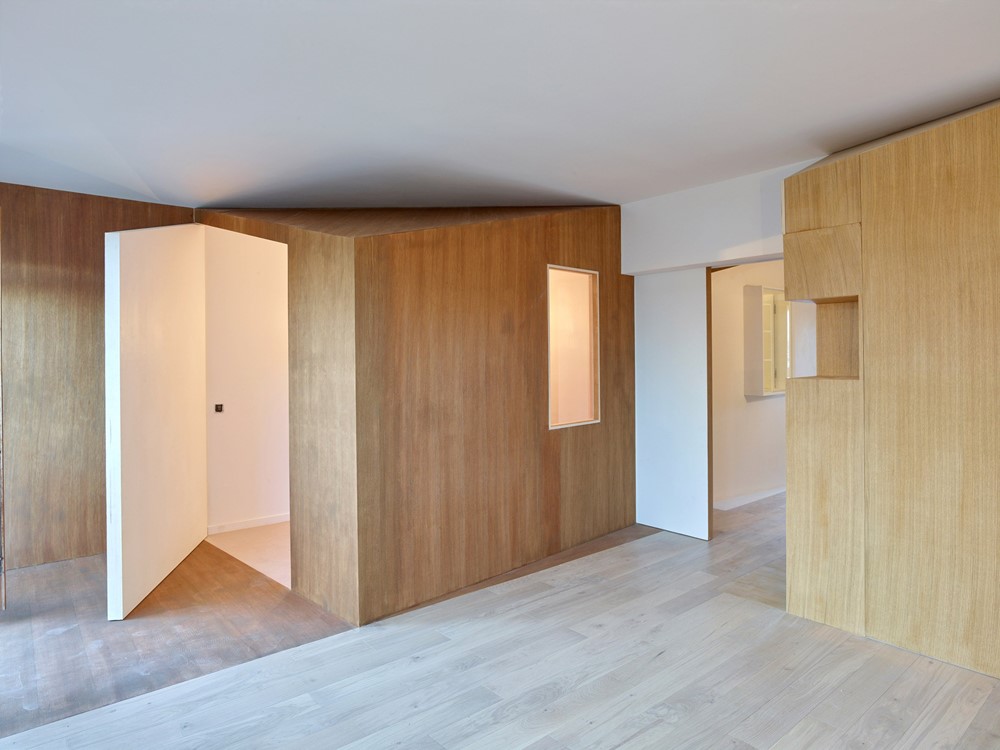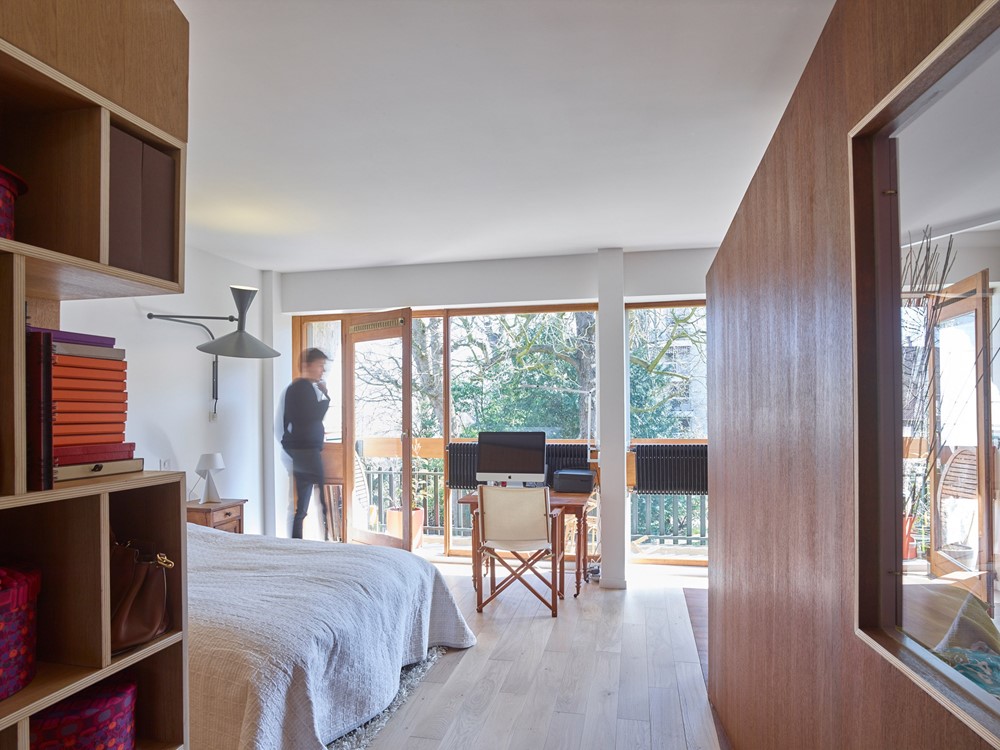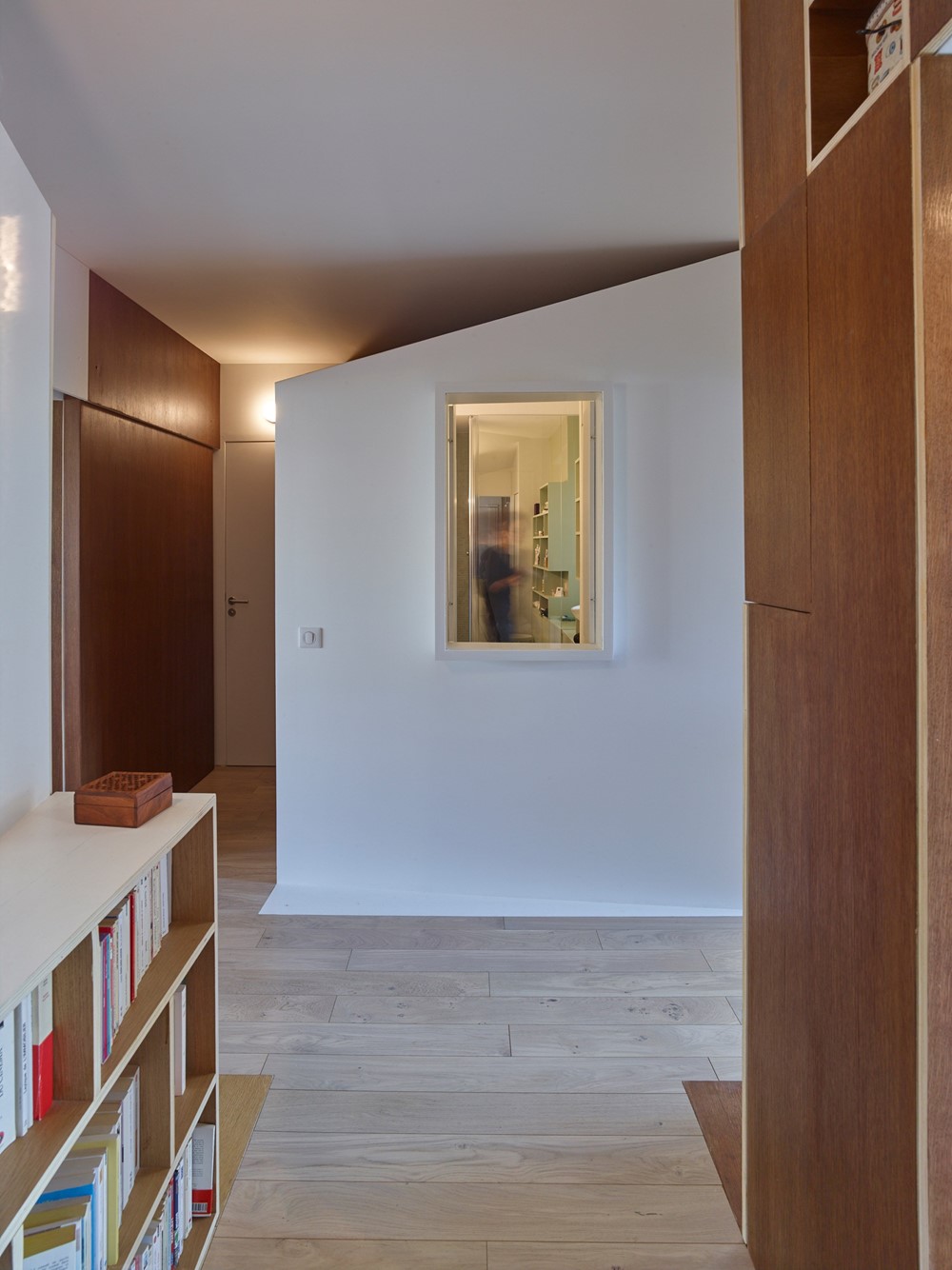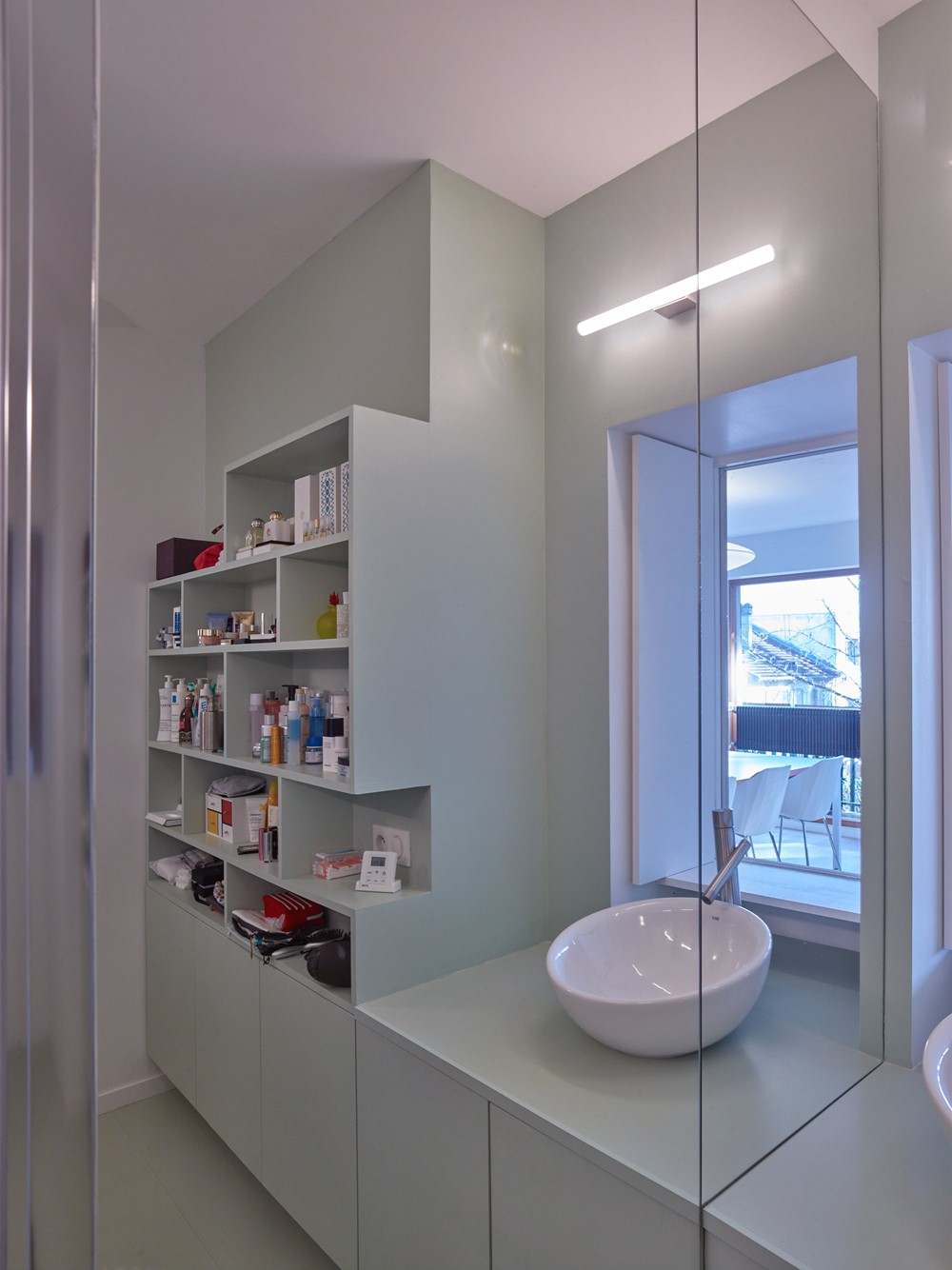Apartment in Sceaux is a project designed by h2o architectes in 2016, covers a area of 85 m2 and is located in Sceaux.

















This interior design and refurbishment project takes place in a 1960’s housing block built out of finely finished armed concrete. Unchanged since its construction, the ancient apartment followed a relatively classical distribution with closed rooms yet with rather generous openings onto the surrounding green urban environment. The commission was to transform the space including a spacious living room and bedroom, a semi-open kitchen and a temporary bed-sit accommodation for guests. The structural elements as well as the mains network (supplies and evacuation) had to remain unchanged. We imagined the volume of the apartment as a free plan, opened up to a maximum in order to make the best of the space throughout the flat, which receives natural light on both sides.
The different functions of daily life are integrated in distinct volumes which organize the space. These volumes are made up of wood, for the structure as for the envelope. Each function is differentiated thanks to the use of a different kind of wood, adding a contrast of materials. The volumes function as articulating objects between the spaces. Each autonomous “box” is set at a distance from the façades to leave the great window bays along the balconies free.
A game of slopes in the upper parts allows for the volumes to detach from the ceiling. They give the impression that they have been slotted inside the building. This work on slopes also allows to preserve the entire perception of the empty volume and to appreciate the newly freed space. The different wooden volumes each have a window creating interconnections between the programs as well as visual openings towards the panoramic views of the glazed façades. A great number of cupboards, shelves and other useful elements are integrated in the depth of the walls of the interior constructions. The dimensions of each volume is adjusted to offer both the necessary space linked to the function of the “room” but also to leave a maximum of space to the negative volume, which paradoxically remains the principle living space…
Photography by Stéphane Chalmeau



